We’re thrilled to introduce The Monday Essay!
If you read The Dispatch regularly, you know that one of the main things we aspire to do—going all the way back to our founding—is inject more sober-minded analysis into a media environment rife with hot takes. We believe that’s especially needed in the middle of an election season.
To that end, we will be bringing you a fresh perspective from a contributing writer every Monday about long-term, big-picture questions about politics, policy, and culture. What’s missing from our debates about crime trends? How does an economist approach the falling birth rate? Should a civilian population’s beliefs enter into a military planner’s ethical calculus?
And to kick things off today: How did we start thinking of the three branches of government as “coequal”?
Let us know in the comments what topics you’d like to read future a Monday Essay about, and, as always, thank you for supporting our work!
It is a truism in modern politics that ours is a system of “coequal branches.” Politicians of both parties solemnly invoke this principle all the time. We hear it even as early as civics class in elementary school. Former Sen. Ben Sasse of Nebraska encapsulated this tendency in a 2020 post, in which he wrote, “As all of us learned in School House Rock, the judiciary is not only a separate branch of government from the Executive and Legislative branches, but also a co-equal one.”
There is just one problem—it’s not true.
The Constitution is not a system of coequal branches. Congress is the dominant branch of our government. How, then, did this idea become so embedded in our national consciousness?
Equal in status, not power.
Part of the problem is the English language itself. Exactly what does coequal mean? It depends. If it means equal in status, that is a perfectly acceptable understanding of our Constitution. The executive, legislative, and judicial branches serve essential but distinct functions of government and are thus deserving of equal respect. But in fits and starts, coequal has come to mean equal in power.
This is not what the framers of our Constitution had in mind at all. In the Federalist Papers, James Madison never proffers that the branches of the federal government are “coequal.” He acknowledges—in Federalist 20 and 63, respectively—that the states are coequal in their own spheres, as are the House and the Senate. But when describing how the branches relate to one another, he prefers the term “co-ordinate.” That is much closer to the idea of equality of status. Each branch embodies one of the three essential functions of government—the power to write laws, the power to enforce the laws, and the power to adjudicate disputes arising under the laws—which creates a kind of equality.
But these functions being “co-ordinate” does not make each branch equally important in ruling over us. Neither the executive nor the judiciary can wield power unless the legislative has already exercised its power. Moreover, the essential principle of republican government is that the people exercise sovereignty over the lawmaking process. The enforcement and adjudication of the law are supposed to follow from the clear expressions of the law itself. This is why it is important that Congress reflect the public will. It is less important for the police and judges to reflect us; rather, they should follow the laws that we write.
That Congress is the dominant branch is not simply derived from political theory, however, but from the plain text of the Constitution itself. Consider, for instance, how the founding charter distributes power over internal organization. Each house of Congress is sovereign regarding its rules and its membership: The Senate is fully sovereign over the Senate while the House is fully sovereign over the House. Members are also immune from prosecution insofar as they are engaging in their duties as legislators. On the flip side, Congress has the power to impeach and convict any judicial or executive officer, without input from the other branches. It also has the power to fundamentally redesign the judiciary. The only constitutional requirement is that there be a supreme court. The inferior courts, the size of the Supreme Court, and even its appellate jurisdiction are all up to Congress.
If I can fire you, but you cannot fire me, would you say we are equal? Of course not. And so it goes with Congress—it is the dominant branch.
What then of checks and balances? This feature of our system is intended to prevent the government from abusing its vast, inherent powers. The function of checks and balances is not to equalize the branches in power, however, but to prevent one from intervening in the affairs of the others.
That Congress is the dominant branch is not simply derived from political theory, however, but from the plain text of the Constitution itself.
Consider the presidential veto. It does not make the executive an equal partner in the lawmaking process, as he can only give a thumbs up or thumbs down to any bill that reaches his desk. And even then, he is subject to being overridden by two-thirds of the House and Senate. Instead, the veto is meant as a check on Congress, to make sure it does not violate the Constitution, enact unwise laws, or encroach on the prerogatives of the president himself.
And the courts play virtually no role in the constitutional system of checks and balances. Judicial review amounts to a check on the entire system, but that was not established until 1804. Even the framers disagreed about it. Alexander Hamilton anticipated judicial review in Federalist 78, but Madison disdained it throughout his political career. Even if we take Hamilton’s view as canonical, the courts remain at the mercy of the lawmaking process. Congress, after all, can redesign the entire system if it so chooses.
The real purpose of checks and balances, then, is not for the other branches to reach equality of power with the Congress, but to limit the ability of Congress to meddle in their spheres.
Nixon’s rhetorical sleight of hand.
Why have these basic constitutional truths been lost to the glib falsity of “coequal branches?” The political scientist David Siemers wrote a fantastic study on this subject in 2018, entitled The Myth of Coequal Branches. In it, Siemers notes that presidents have always looked to expand their ambit and, in times of political tension, they have been prone to assert coequality.
Evidence of this claim dates back to Andrew Jackson’s administration. When the Senate censured the president for the fight over the Bank of the United States, Jackson rejected its prerogative to take such an action under the Constitution. Where the founding document is silent, he asserted, “each of them is the coequal of the other two, and all are the servants of the American people, without power or right to control or censure each other in the service of their common superior.”
Thirty years later, James Buchanan would similarly assert coequality to defend against congressional Republicans investigating corrupt hiring practices. Congress, however, rejected this idea and defended its status as a superior branch. Over the next 100 years, only the Rutherford Hayes administration made a similar kind of assertion, that time over a congressional attempt to prohibit the president from summoning the military to prevent violence during election season. But again, these claims to coequality had little effect.
That changed during the Nixon tenure. In an effort to curtail inflation, Nixon refused to spend money authorized by Congress—a practice done in the past but never to that extent. He also read his war-making powers in a maximalist way to justify his bombardment of Cambodia.
But perhaps his most notable use of the myth of coequality came during the Watergate scandal. To deflect congressional investigation, Nixon sought an expansive understanding of executive privilege, or the authority of the president to conceal from Congress essential deliberations of his own branch. Historically, the privilege had been limited to matters such as internal executive debates regarding policy, as when George Washington refused to send the House documents related to the Jay Treaty of 1796. Nixon, on the other hand, asserted that the coequality of the branches protected not just White House debates over policy but everything it considered.
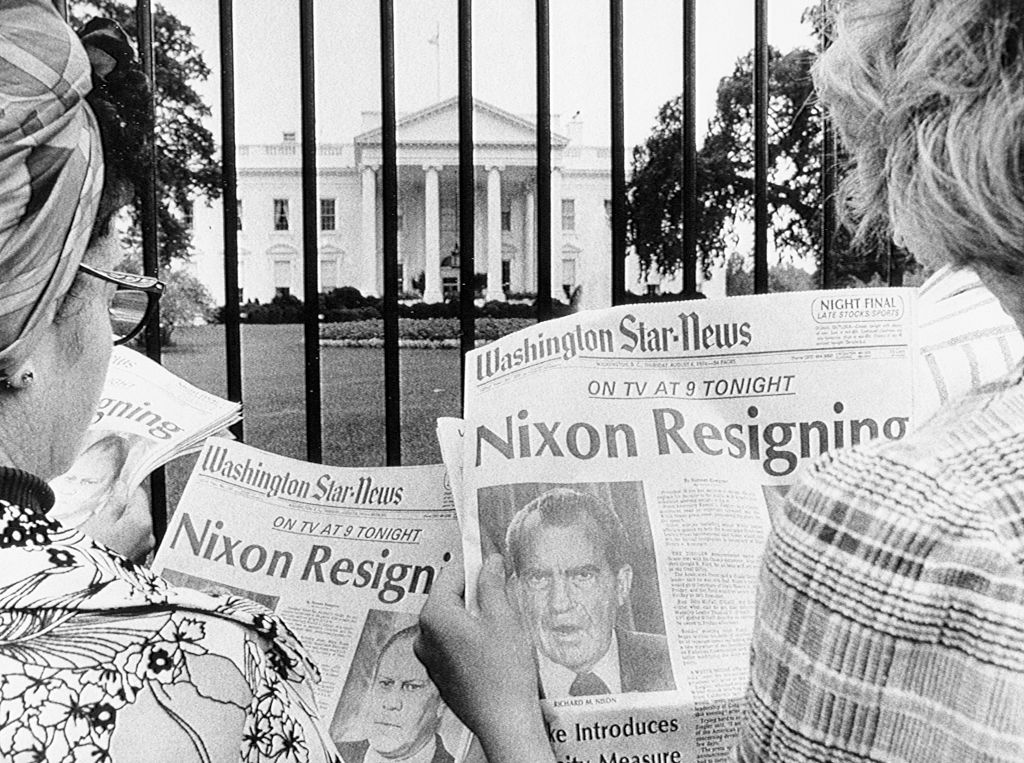
The rhetorical sleight of hand did not save Nixon. Congress enacted new laws—like the War Powers Resolution of 1973 and the Congressional Budget and Impoundment Control Act—to curtail his broad use of power. The Supreme Court rejected Nixon’s understanding of executive privilege; his private conversations about Watergate were released, forcing him to resign. Yet even as the Nixonian excesses were pulled back, the phrase “coequal branches” stuck to our political discourse. Per Siemers, it has been repeated by every presidential administration since Ronald Reagan.
The Clinton impeachment trial offers a stark example of how this rhetorical error became deeply embedded in our national lexicon. The lawyers for Clinton and the House impeachment managers disagreed on nearly everything, but they both sought to frame the fight in the context of our “three coequal branches,” as Clinton lawyer David Kendall put it. Meanwhile, the House Republicans argued that Clinton’s actions demonstrated a “disdain” for the “other two coequal branches of government.” By that point, the idea was not simply equality of prestige or status, but an equality of power—in other words, the idea that power is evenly divided across the three branches of government.
The ballooning executive power.
As the 20th century drew to a close, our language had certainly shifted toward entertaining the idea of coequality. But it’s important to note that the linguistic shifts reflected a similar change in political power over the previous 100 years.
The Progressive Era was the first period in which reformers sought to enhance the powers of the executive against those of Congress. In fairness, between the Civil War and the turn of the 20th century, economic policy, judicial nominations, and even foreign affairs became a cesspool of corruption in Congress, and particularly in the Senate. Progressives wanted to reform Congress—hence the 17th Amendment mandating the popular election of senators—but they also sought to take power away from it.
Teddy Roosevelt and Woodrow Wilson saw the presidential office as the venue by which a great leader could express the national interest over and above the petty squabbling of Congress. Hamilton envisioned this too, but Roosevelt and Wilson updated it for the era of mass communication, placing the president at the center of political life. Wilson also sought to shift control over policy details from Congress to the bureaucratic class, such as regulatory agencies like the Federal Trade Commission. His thinking was that the former was rife with corruption while the latter was independent, disinterested, and qualified.
Over the last 125 years, Congress has allowed itself to be cowed by the executive. People look first and foremost to the president for national leadership, so members of Congress—at least those of the president’s party—are inclined to oblige him. Moreover, Congress has delegated over de facto lawmaking power to the executive. From Wilson’s New Freedom to Franklin Roosevelt’s New Deal, Lyndon Johnson’s Great Society, and most recently Barack Obama’s Affordable Care and Dodd-Frank Acts, the ratchet has only moved in one direction. Congress writes vague laws on the environment, health care, banking, labor, consumer safety, scientific research, and more, leaving it to the executive branch bureaucrats to fill in the details.
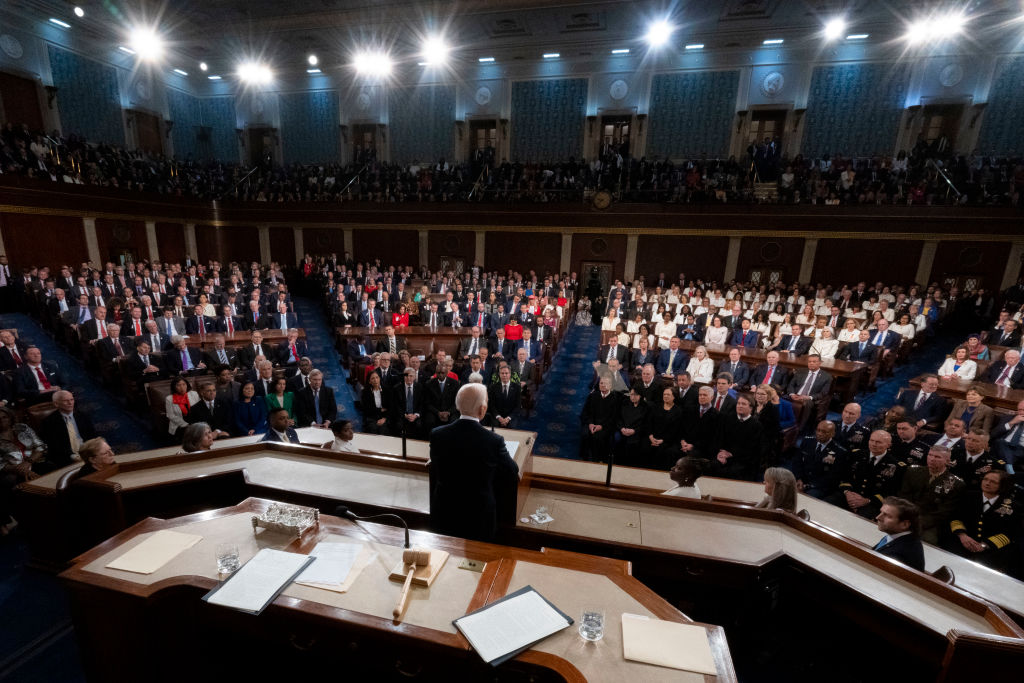
The dominant branch.
Our Constitution establishes strict boundaries between the lawmaking and executive functions of government because the framers believed that this was an important way to safeguard liberty. But again, in fits and starts, those barriers have been broken down, so that the writing of the law and enforcement of the law have become indistinguishable. This trend began during the progressive movement, reached its zenith during the New Deal and Great Society, and has been reinforced by subsequent administrations ever since. The separation of powers—one of our system’s core principles—has suffered as a result. The president has gained so much power at the expense of Congress that the two have become, in effect, equal in power.
How to address this problem? Most of all, Congress has to start acting like the dominant branch of government. It must stop deferring to the executive and judicial branches to create rules that, under the Constitution, should be made by lawmakers. Congress should write regulations. It should provide greater specificity on how money gets spent. It should demand greater accountability from the executive as a prerequisite for funding the bureaucracy.
Yet before it can do any of this, Congress needs to reform its internal organization, which is now badly out of date. The budgetary process needs a top-to-bottom overhaul, to facilitate careful legislative deliberation over spending rather than last-minute omnibus bills that shovel cash to the executive. The filibuster in the Senate should also be reformed, retaining the right of the minority to meaningfully participate in the lawmaking process but ending its ability to stop the upper chamber in its tracks. Modernizing Congress in these ways would make it better able to retrieve its lost constitutional responsibilities.
Such reforms will undoubtedly require legislative finesse and careful deliberation. They’ll take time. But a good place to start is by recognizing that never in the minds of the framers did the phrase “coequal branches” exist. This idea is not merely an error in terminology—it reflects a fundamental distortion of our constitutional system.
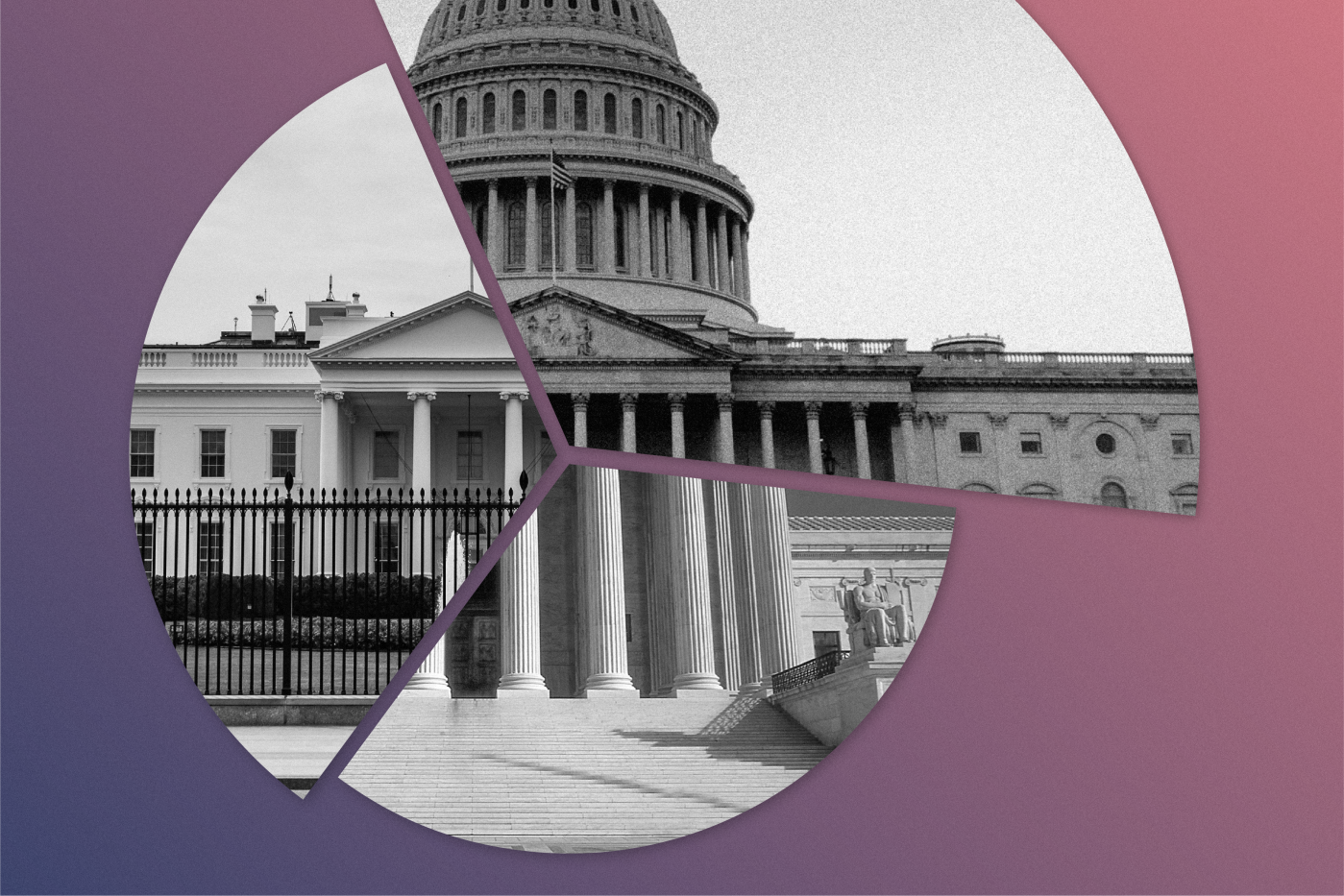

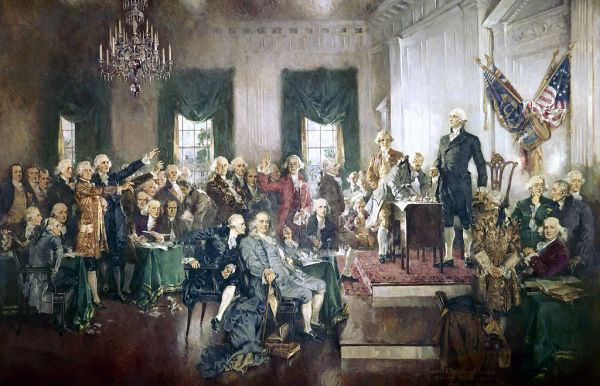
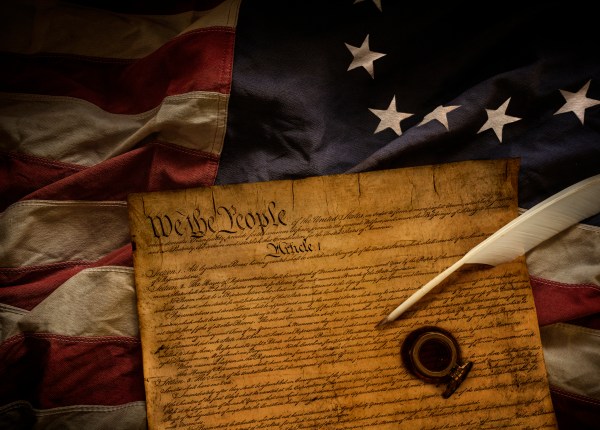

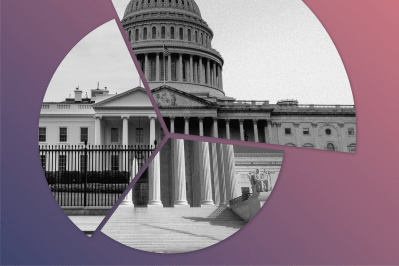
Please note that we at The Dispatch hold ourselves, our work, and our commenters to a higher standard than other places on the internet. We welcome comments that foster genuine debate or discussion—including comments critical of us or our work—but responses that include ad hominem attacks on fellow Dispatch members or are intended to stoke fear and anger may be moderated.
With your membership, you only have the ability to comment on The Morning Dispatch articles. Consider upgrading to join the conversation everywhere.